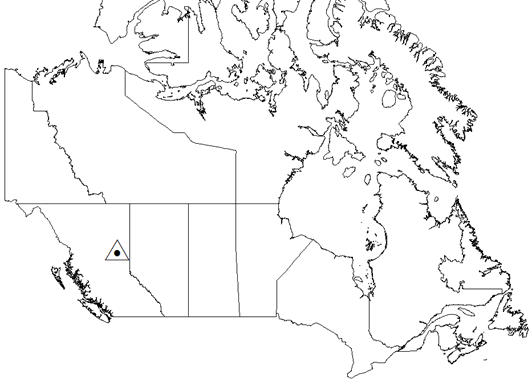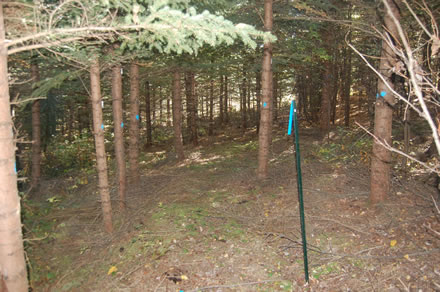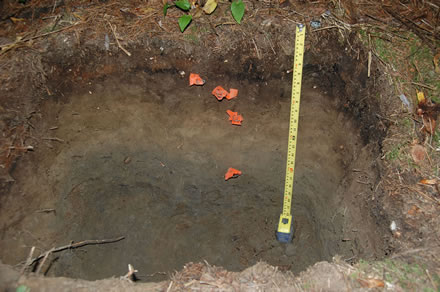Johnson Creek wood ash trial

Location
Northeastern British Columbia
Ecozone: Boreal Plains
Elevation: 780 m
Climate
1981 to 2010 monthly climate point estimates generated from the Natural Resources Canada climate modeling project.
Mean annual precipitation: 555 mm
Mean minimum temperature in January: −15.2°C
Mean maximum temperature in July: 21.4°C
Site description
The Johnson Creek site experienced conifer rehabilitation in 1987, and wildfire in 1991. White spruce (Picea glauca (Moench) Voss), and to a lesser extent lodgepole pine (Pinus contorta Dougl. ex Loud. var. latifolia Engelm.), planting occurred in 1993 at a density of 2,400 trees per ha. Before the experiment, the site supported a second-growth white spruce-dominated stand mixed with balsam poplar (Populus balsamifera L.), paper birch (Betula papyrifera Marsh.), and lodgepole pine. The soils developed from glaciofluvial veneer deposits, and have a silt loam over clay loam texture. The soils are Brunisolic Grey Luvisols with a 6-cm-thick forest floor.
Ash description
The ash used for the Johnson Creek wood ash trial was collected from a biomass burner. The ash feedstock comprised softwood bark, shavings, and sawdust. The ash used for the experiment was predominantly fly ash, and was not pretreated before application.

Johnson Creek wood ash trial site.

Soil pit displaying soil horizons at the Johnson Creek wood ash trial site.
Treatment description
Four different treatments were applied in June 2017 including (1) a control (no ash or urea), (2) ash at a rate of 5.0 Mg per ha, (3) urea at a rate of 100 kg nitrogen per ha, and (4) ash at a rate of 5.0 Mg per ha plus urea at a rate of 100 kg nitrogen per ha. Treatment rates (Mg per ha) were calculated based on the dry weight of the ash, and applied to the soil surface by hand. Treatment and control plots were replicated 3 times when the experiment was set up.
Monitoring
Monitoring treatment effects on trees and soil chemistry is ongoing. Data being collected include:
- Trees
- Foliar nutrients
- Diameter
- Soil chemistry
- Acidity (pH)
- Total carbon, nitrogen, and sulphur
- Inorganic carbon
- Ammonium nitrogen
- Carbon and nutrient stocks
(Ash, forest floor, and mineral soil)- Acidity (pH)
- Total carbon and nitrogen
- Ammonium nitrogen
- Nitrate nitrogen
- Available phosphorus, potassium, and heavy metals
Main contact
Richard Kabzems, Research Silviculturist, British Columbia Ministry of Forests, Lands, Natural Resource Operations and Rural Development
Page details
- Date modified: